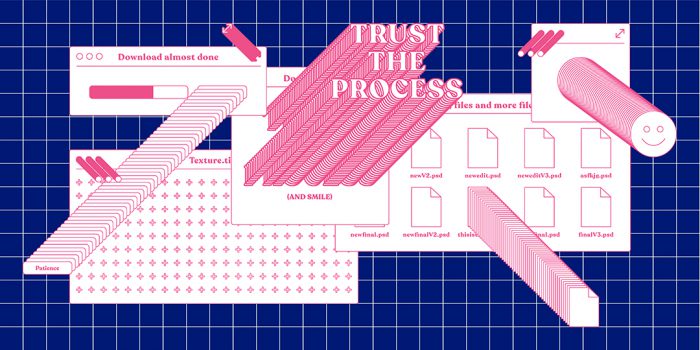The 6 Principles of Persuasion & How They Apply to UX Design

Jenny Harrison is a passionate marketing and business blogger. She loves to engage with readers who are seeking B2B and B2C marketing related information on the internet. She is a featured blogger at various high authority blogs and magazines in which she shared her research and experience with the vast online community. Currently, she is associated with PNC Digital, an Orlando based E-Commerce Development Company specializes in OpenCart, Magento, and Shopify Web Development.
A common misconception about design is that it is all about creativity. The truth of the matter is, both user experience and conversion focused elements need to be kept in mind when designing your website, which makes creativity one of the important things for website design but not the only one.
For years now, companies have been using expert User Experience (UX) designers to make their e-commerce service as interactive, satisfying and accessible as possible for a more expanded consumer base. Of course, you can look at the statistics and user data to improve upon your UX designs, but between the lines, there’s the human aspect of the whole ordeal that is largely overlooked. Understanding the audience is a key difference and nothing explains the human emotions better than psychology.
It is here we need to understand how human cognition works and what’s the best we can do to capture the user’s attention and drive user engagement. Collating the user’s attention and the UX design would be the ideal goal and we’ve got a lot of psychology texts to help us through that. Let’s look no further than one of the leading figures in the field, Dr. Robert Cialdini, and how his influence shapes the UX designs of today.
Following the principles of Robert Cialdini
Influence is an important term and a rare talent that UX designers need to have to put an impact on their audience. Be it a service under any budget, for a digital product or otherwise, or targeting any specific group of age or race, some of the essential principles provided by the psychologist Robert Cialdini lay the groundwork for anything the UX designers might attempt.
Authority
Think of this principle as ‘social proof’ but on a larger scale with only the most authentic and validated source. So instead of listening to a stranger or even your friend whose opinion may or may not be so valuable to you, you can certainly not disagree with the views of individuals who are experts in their respective fields.
This is why, whenever you decide to watch a film, you don’t just stick with the IMBD rating or your friend’s recommendation since they represent various opinions from naïve to regular movie-goers. You will also give sheer value to many popular critics like Roger Ebert and the ones on Rotten Tomatoes to name a few.
This isn’t restricted to films only; you will also be able to read professional reviews from authoritative figures including Forbes on business matters, Edmunds for automobiles and Tech Radar for new electronic appliances.
Social Proof
What if you weren’t sure about a particular service? Maybe you are having a hard time finding it reliable or doubting the quality of it. Who do you look up to, who do you ask for suggestions? You can start with your friends and then you make your way to your friends’ friends and so on. This ‘social proof’ factor is very important to the UX design as well. That is why you’re very likely to come across certificates of verifications across many websites.
Other UX designs will include any acclamations or accolades received by the company, their user-count, and even written reviews. This gives the UX design of the website more authenticity and almost a feel of security.
One such website to make use of this feature is the recent movie and video game buffs online marketplace, Lootcrate. As you scroll down their homepage, you’ll notice a bunch of names you will instantly recognize and relate to. From your childhood to names that you come across daily in your favourite past-times, you can vouch for their authenticity.
This obviously gives you another reason as to why you would rather be shopping here than other e-commerce brands who may have not cared much about the ‘social proof’ feature.
Reciprocation
Calling them his ‘weapons on influence,’ one of the first principles is that of reciprocation. In layman’s terms, it is defined as the act of giving back or returning a favour. This is a natural human response to kindness and most of the user base is likely to respond similarly if you give them a reason first. This could start with something as traditional as handing them a free sample of your product to gain their trust and to make a good first impression.
In terms of UX design for e-commerce, this could be free vouchers on a potential customer’s first visit to your website or store. Maybe even give them a little taste of something exclusive or a demo for a premium service?
Sophie and Trey, for example, is an online fashion brand that offers 10% off just for signing up on their website. So even before the customer knows much about the brand and just happen to land on their website, they’ll have enough reason to stay a little longer due to the discount. More so, because of the extended amount of time that will most probably be spent, there’s a decent chance a particular product may catch their attention.
Moreover, the ‘Free shipping on orders over $25’ sign on the same website acts as an added bonus designed to keep visitors browsing the site a little longer.
Commitment and Consistency
Users are more likely to continue purchases and transactions from a particular website if they’ve been satisfied with the products that they’ve received time and time again. This is because it gives them a feeling of reliance and loyalty to the e-commerce brand which delivers on all fronts. Of course, this is a fundamental concept of any business where even a one-time quality compromise can hurt a lot when it comes to the longevity of the business-customer relationship.
Thanks to how all of us are likely to abide by contracts and promises, the e-market can utilize a similar concept to confirm a user’s purchase when they’re on the edge between buying something or not. This is most evident with pre-orders and pre-purchases especially with sequels of video games or merchandise that the user’s been a fan of or has shown loyalty to it in the past.
Thus it’s no surprise when posters for films read ‘From the creators of Terminator’ or starring ‘Academy Award winner.’ You already have been committed to these talented performers and creators because of their past presentations.
Scarcity
Another important principle we can gather from Cialdini’s perspective is the concept of scarcity. This idea explains why you’re more likely to order a meal when there’s limited time 50% percent discount on it, even if you may not feel hungry. Your desire for not missing out always trumps your appetite (or most of your needs for that matter). The UX of websites can promote that idea by offering limited-time deals or create urgency by any means.
No one does this better than Amazon, which adopts this ‘hurry up, there isn’t time’ strategy quite well. In addition to the ‘Deal of the Day’ and ‘Today’s Deals’ on their first page, they’ll also inform you of the remaining stock of each product you browse in detail in red text color to create a sense of urgency.
Taking this up a notch, you can even send out discounts which appear ‘exclusive’ to the inbox folders of your users, telling them how you’ve handed them out only to a select few customers.
Lastly, we can always use the past to learn and build upon the future. That is very true to UX design of the websites as well. Monitoring where the users spend most of their time on your website is essential and it will give your UX design team an insight at how they can utilize the strengths of your platform and extend it to every part of it.
Liking
This is a slight variation of the ‘social proof’ principle above with this one being restrictive to people who’ve only favoured the product which you’re thinking of going for. Of course, if someone else vouches for the quality of the service, it’s more likely you go ahead with that service even if the positive feedback is from a complete stranger.
This is quite common with many websites opting for such a mechanism including Facebook and the ‘thumbs up,’ Twitter and its retweets, Amazon, Ebay and other online shopping websites for user reviews and Steam and IMDB among entertainment platforms for a combined user rating or score.
Conclusion
The art of persuasion is a delicate talent, a special one that reaps a lot of benefits. In this rapidly advancing digital era, there are multiple types of software aimed at marketing. But it takes a human to understand a fellow human and that is why UX designers should always look forward to the social and personal psychology of their customers. Paying close attention to some of the prominent psychologists’ principles yields us surprising and yet expected results of bringing out the best in terms of marketing and promotion via an effective UX design for web. Not only does it help you create useful, unique and rich content for your consumers, but it also helps save you from Google penalties which you really wouldn’t want to fall into.
Thanks to Jenny for the guest post! Are you interested to learn about UX? Read this article from our #ShilloNY graduate Irina Manning about how she became a UX designer in less than a year. For more industry tips and interviews, check the guest author category on the blog.
Want to win some amazing prizes and stay in the loop with all things Shillington? Sign up to our newsletter to automatically go in the draw.







